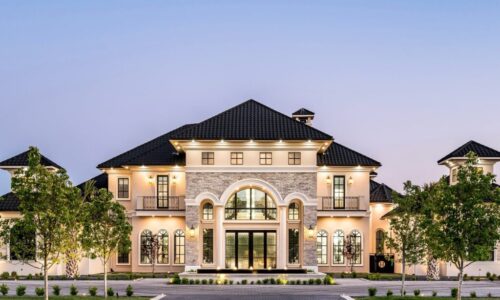- UncovMag_001
- Housing, Real Estate, US
- 0 Comments
- 1668 Views
The surplus of housing units, however, does not completely alleviate the housing crisis, as the study emphasizes the persistent affordability issue, especially for low- and very low-income households.
In a recent study published in the academic journal Housing Policy Debate, researchers found that the long-discussed housing shortage in the US may not exist as previously thought.
Contrary to popular belief, the study revealed that between 2000 and 2020, the US had a surplus of 3.3 million homes. This surplus challenges the notion of a housing shortage and is attributed to the significant growth in housing stock during the early 2000s, particularly during the housing boom from 2000 to 2007.
The surplus of housing units, however, does not completely alleviate the housing crisis, as the study emphasizes the persistent affordability issue, especially for low- and very low-income households.
The researchers noted a mismatch between the cost of housing and the incomes of these households, with a specific shortage of affordable housing units for families with incomes below 60% of the median income in their respective markets. For very low-income households earning less than $22,000 annually, the shortage of affordable housing units was especially pronounced.
The study highlighted that even with the surplus of housing units, there remains a critical shortage of affordable housing options for the poorest households in the US. This shortage underscores the complex challenge of ensuring housing affordability for low-income families, despite the overall surplus of housing units nationwide.
“We’re sort of an outlier in our analysis, and partly it’s because we’re taking this longer-term perspective,” Alex Schwartz, one of the study’s authors and chair of the master’s program in urban policy at the New School, says.
Schwartz and his research partner, Kirk McClure, professor emeritus of urban planning at the University of Kansas, argue that many current studies that examine housing stock—which find that there is a national shortage—don’t go back in time far enough and therefore overlook the large number of homes that were built during the housing boom that stretched from 2000 to 2007.
“The housing bubble that we experienced was a big growth in prices, but also a big growth in production,” McClure says.
Capturing such a long period makes sure the research doesn’t overreact to short-term ups and downs of the market, McClure and Schwartz argue. “We massively overbuilt the number of housing units we needed, and we are still here in 2024 trying to absorb that massive overbuild in housing,” McClure said.
The findings contrast with a plethora of research that points to a widespread shortage of new homes being constructed. Earlier this month, the housing website Zillow published an analysis that showed in 2022 there was a housing deficit of 4.5 million new homes. While a more recent survey from Realtor.com estimated that from 2012 to 2023 there was a shortage of 2.5 million homes.
However, these studies prefer to measure the construction of new homes, while McClure and Schwartz look at vacant homes. That on its own is a complicating factor. As the two cite in their paper, the physical condition of the vacant homes isn’t fully known. Some apartments may be sitting empty because a stubborn landlord refuses to lower the rent; others because they serve as a vacation home for an affluent family, while some may be entirely dilapidated and therefore uninhabitable—doing little to solve the housing crisis.
A housing surplus that still prices out many
But the new finding about overall housing supply levels, which Schwartz says was a surprise, offers some nuance to one of the major problems in the housing market.
“The issue is not so much about the aggregate shortfall of housing units, but rather a mismatch between the cost of housing and the incomes of households,” Schwartz said. “Most especially among the lowest-income households, where there is a mismatch between what they can afford and the number of units that are affordable.”
After this study, economists might debate the level of housing supply available in the U.S., but the core issue appears to remain the same: affordability.
The researchers found a shortage of housing that low- and very-low-income families could afford. Low-income families were defined as those with incomes between 30% and 60% of the median in a given market, while very low-income families were those making less than 30% of the median—roughly equivalent to the poverty line, according to the paper.
McClure tries to distinguish between households making around $45,000 a year, which might be on a tight budget, and those making less than $22,000, which are the poorest in the U.S. When assessing the rental markets in 381 metropolitan areas and 526 small towns, the research found that there was an average shortage of about 7,700 units that the very poorest households, making under $22,000, could afford, according to the study.
For those households, which require government assistance to find housing, the absolute highest they could afford to pay for rent is $550. Building new homes and apartment buildings can’t address the shortage for the absolute poorest. McClure explains that no private developer can build a new home or apartment that would be within the price range for the poorest of the poor. “Even if you could build the unit for $0, there is no way a private developer can build a unit at that [$550] price and survive,” McClure says. “Just the property taxes, insurance, and utility costs are north of that number.”
So the answer is to help them afford the available housing. McClure and Schwartz recommend offering more Section 8 housing choice vouchers that subsidize rent payments.
“In many circumstances, it is best to make use of existing stock rather than pay the very large sums needed to add stock to an already ample market,” the paper reads. “Helping low-income households rent existing units is much less costly than building deeply subsidized units with rents affordable to low-income households.”
Building new homes can reduce prices in the long term
But that’s not to say McClure and Schwartz are against building new housing. Cities and towns should look to build “a wider array of housing types,” according to Schwartz, such as smaller units or higher-density housing.
The reason new housing inventory will need to be built, even during a surplus, is because rents and home prices can’t be expected to come down on their own. “It’s very unlikely to think that existing households on their own would just reduce their sales price unless they were required to for some reason,” Schwartz said.
Building more housing is also seen as an effective way to lower rents. A seminal piece of research from NYU’s Furman Center found that building more homes lowers rents.
New housing developments often raise the fears of gentrification; that existing residents will get priced out of ritzy new apartments in formerly affordable neighbourhoods. The Furman Center research contends that the law of supply and demand holds in the housing market as well.
A widely cited example from 2016 in Auckland, New Zealand, found that when about three-quarters of the city was rezoned to allow for denser housing construction, housing supply increased by 4%. Meanwhile, rents for three-bedroom apartments dropped 26% to 33% compared with similar areas, according to a working paper from May 2023.
Other studies have found the effect of new housing isn’t usually as stark as the Auckland example. More often than not, overall rents do still rise when new housing is built, but not as quickly as they would have otherwise.
McClure doesn’t disagree with that research but notes that it doesn’t address the poorest of the poor. “Alex and I are not looking to lower $2,000 rents to $1,800—that little difference is not enough,” McClure says. “We are truly trying to find ways to rent apartments to people who cannot afford more than $500 a month.”
Read Also: Market Dynamics Change Demand for Luxury Residential Real Estate











